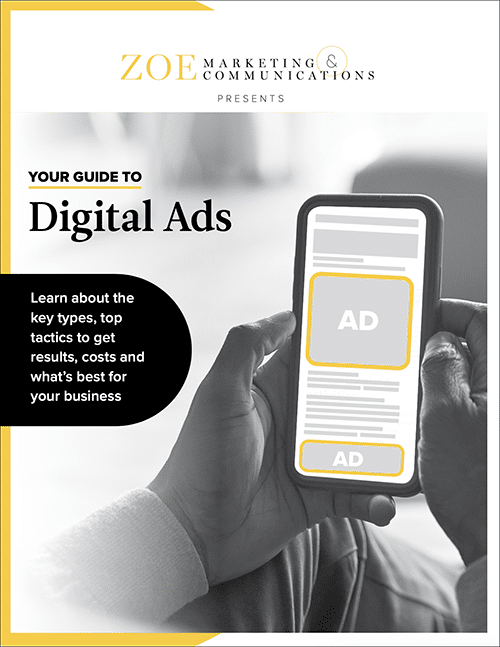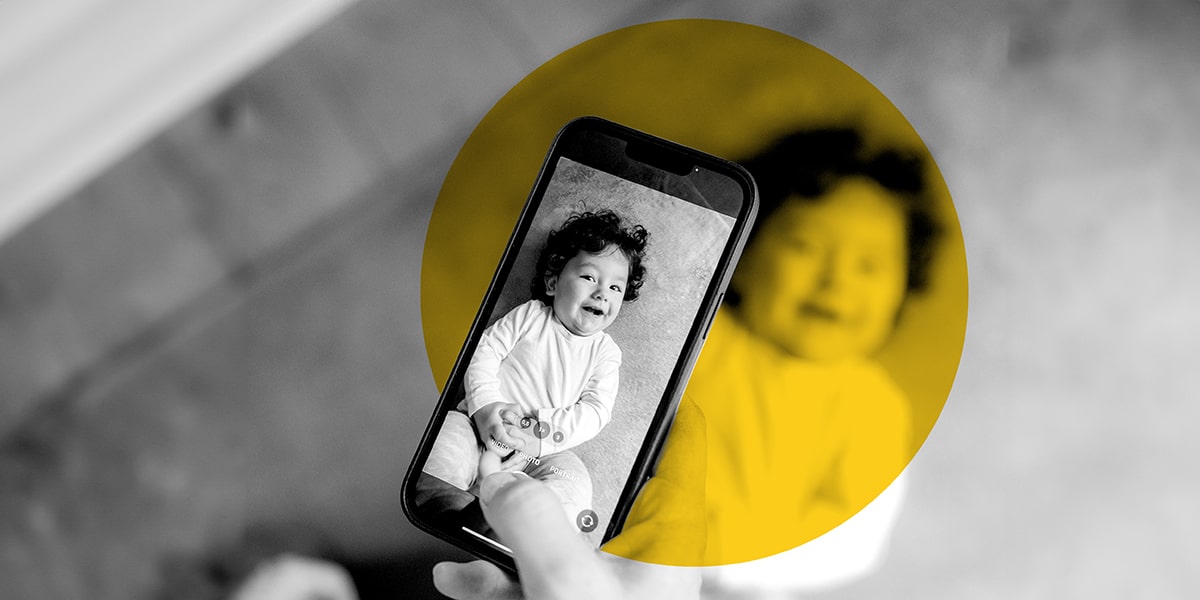
Download Your Digital Ads Guide
Learn how digital ads can help your business, including the tools, techniques and strategies to create successful campaigns.
Topics:
November 17th, 2022 | 2 min. read
By Kim Kovelle

Marketing photography can be nerve-wracking — especially if you’re not a pro photographer. How do you get compelling shots that make your people and brand look good?
We get it. At Zoe Marketing & Communications, we’ve designed thousands of ads, many using supplied photos. And we’re here to assure you: You can take solid marketing photos with your smartphone.
Here’s how to get better shots, even without a fancy camera or experience.
Learn how digital ads can help your business, including the tools, techniques and strategies to create successful campaigns.
Smartphones rely on good lighting. Use these strategies:
Note how the window light spills onto the subject’s face.

Photo credit: iStock / xavierarnau
There’s a window behind the subject, which makes her face shadowed. Always avoid this.

The focus should be on people, not clutter.
People working on a mural. We can’t see all the details but we can figure out what’s going on. It’s not too busy.

Photo credit: iStock / SDI Productions
We can’t read part of the banner, due to a person standing in front of it. There are issues with shadows and sunlight in the eyes, too.

Photo credit: Flickr / Province of British Columbia / Creative Commons (CC BY-NC-ND 2.0)
Photos with 1-3 people perform best.
A classic trio — a teacher and two kids — plus a partially visible third. The focus is sharp, and the faded busy background keeps attention on them.

Photo credit: iStock / FatCamera
Faces get lost, focus is unclear and harsh shadows add distraction.

Photo credit: Flickr / Houston Museum of Natural History / Creative Commons (CC BY-NC-ND 2.0)
People feel more comfortable when you take charge.
Keep it simple:
Now that you have a digital heap, it’s time to edit.
Marketing photography feels stressful at first, but good lighting, clean backgrounds and strong subject focus go a long way. Direct your subjects, shoot plenty and don’t overthink technical details.
Want expert-designed ads, emails and more? Talk us at Zoe Marketing & Communications. We’ll put our experience to work for you.
Looking for more tips? Check out these articles:

Learn how digital ads can help your business, including the tools, techniques and strategies to create successful campaigns.
As Zoe Marketing & Communications’ content manager, Kim Kovelle brings over 20 years of writing and editing experience in metro Detroit. She has strong roots in community journalism and a knack for making complicated topics make more sense.
Topics:
